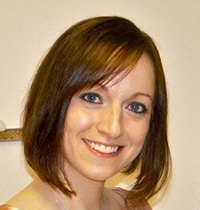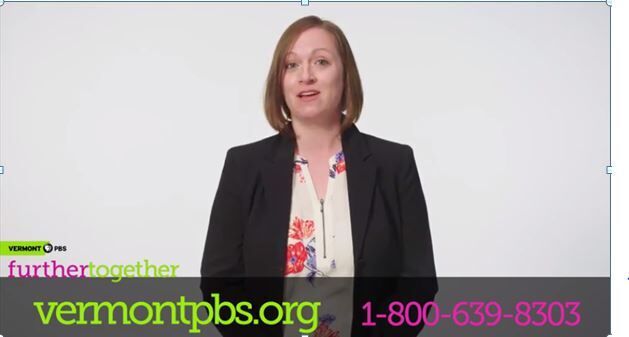Re-imagining Pledge, Vermont PBS adapts WNET’s “Giving Back Primetime” Model

Re-imagining Pledge, Vermont PBS adapts WNET’s “Giving Back Primetime” Model
Hoping to stabilize workflow, retain their audience, and get ahead of the challenges facing pledge, Vermont PBS embarked on a new approach to on-air fundraising.
An atmosphere of change

“We have an atmosphere here where we’re free to bring anything to the table,” says Katie Graham, membership director at Vermont PBS. When she caught wind of WNET’s experiments with pledge programming in New York City—giving back prime-time hours without pledge interruption for a less-is-more fundraising approach {link to WNET posts one, two and three}—she felt the freedom to present that idea to her team. “They were very receptive to it,” Graham says. She began talking to Kent Steele, WNET’s executive director of broadcasting, and figuring out how to apply that New York model to Vermont’s smaller, more rural viewership.
Meeting those viewers and donors where they are was a driving force behind Graham’s thinking. “Pledge is changing. The way people view TV and their programming is changing,” she says. In early 2017, of course, Vermont PBS banked millions of dollars after selling one of its broadcast licenses in the Spectrum auction. But Graham says she would be experimenting with programming with or without those resources. “System-wide, everybody is looking at what they can do. We’d been looking at the results [of pledge] over the years and it was time to make a change. We felt we needed to be ahead of the game instead of reactionary.”
Writing on the Wall
Those pledge results had become very clear over the past years. “During a typical pledge period, viewership went down and then took a couple weeks to come back,” she says. “We wanted to keep that audience consistently there, watching our shows, regardless of what time of year it is.”
She and her team also hoped a new approach could stabilize the workflow at Vermont PBS. “You’re not ramping up four times a year for this crazy, two-week pledge drive. You know what to expect, month after month, rather than this stressful time every quarter.”
Pledge, Re-imagined

So like WNET, Vermont PBS abandoned the quarterly pledge drive. In its place, they built pledge into a consistent baseline schedule, week in and week out. “We set aside Thursday night for pledge, as well as Saturday afternoons, Sunday mornings and Sunday afternoons, with some overnight peppered throughout the week,” Graham says. The station made what it calls “Phase 1” of the change in March.
Making space on Thursday nights required moving one of the network’s most popular shows, The Doctor Blake Mysteries. Luckily, this coincided with a break in the series. “When it came time for Doctor Blake to start back up, we moved it to Saturdays following our block of British comedies,” Graham says. “We made sure to communicate the schedule shift in our monthly schedule grid email as well as our weekly e-newsletters.”
For Phase 2 in May, the station is adding a pledge show on one weekday afternoon between 3:30 and 5pm. It’s also shifting how it communicates to viewers. “Our communication in Phase 2 will have less introductory language and more language like ‘we hope you noticed [the change].’ Now we’re asking for viewer feedback.”
NYC vs. Vermont
She says communicating the change has been an essential part of the process. “You have to keep hammering home the message of what you’re doing, so people don’t think they’re watching normal programming without being compelled to give,” she says. Still, Graham couldn’t just copy the same WNET messaging. “New York City and Vermont couldn’t be more different. We localized our message in interstitial or promo spots. Vermonters are all about being authentically Vermont.”

That’s one reason Thursday nights in the new strategy are focused on locally acquired or produced programming—an effort to showcase local filmmakers across the state, as well as into New Hampshire, upstate New York, Massachusetts and Quebec. The pledge programming is also built around themes. The theme for March was music. April was geared more toward the network’s Canadian audience. “It’s nice that we get to cherry-pick what we perceive to be our most successful programs. That seems to work well for us,” Graham says.
One element of WNET’s approach that didn’t work for Vermont was overnight programming. In March and April, the network aired self-help in the overnights using a traditional pledge approach. The results were as expected: not great. “Pledging in the overnight probably works better in New York City than in Vermont,” Graham says. “It’s almost useless for us to pledge there. Unlike New York, the ‘city that never sleeps,’ we sleep.”
However, Vermont PBS is still airing self-help programming on Sunday mornings, because that programming has proven successful from a pledge perspective—as long as it airs during the right time of day.
Meeting Challenges
“One thing Kent Steele hammered home for us was to hold on and not make any judgments too quickly,” Graham says. He told her to expect a revenue dip almost immediately after changing the pledge strategy. He was right. “That did happen, but then it was nice to see April tick back up for us,” says Graham. The network projects that, by the end of the fiscal year, “we’ll be about even with [where we’d be] if we continued things traditionally. We’re really looking forward to that.”
Program rights remain a challenge, and the station has to manage these very carefully. But the biggest hurdle may have been the timing of the rollout. “We started this conversation in late December,” she says. Though the network considered starting in a new fiscal year, Graham and her team worried that a big change during the summer might not have resonated as strongly. “In Vermont, people are still stuck inside in March and sometimes April. We still had a captive audience then.” Preparing for such a big transition over a period of several weeks required a nimble, fast-moving team and buy-in from the entire staff. “Everyone was very capable and willing,” Graham says. That big shift, however, is one reason Vermont PBS has introduced the change in multiple phases. “We’re taking baby steps to get there.”
Moving forward, the communications emphasis of Phase 2 remains vital. “You have to be very, very clear in your messaging and rollout because some people are going to think you’re done with pledging forever,” she explains. “We’re not leaving pledge. We’re just adjusting the formula. We’re telling viewers and members that if they want to see this continue, it’s up to them.”
Two months into the experiment, the network continues tracking data, listening to viewers, and watching fundraising amounts. “It’s still brand-new. We’re still figuring out what’s important and we’re measuring every metric we can,” Graham says. Stay tuned—we’ll report again on their results in the months to come.
Questions? Tracy Ferrier I Director I PBS Development Services or Katie Graham I Membership Director I Vermont PBS
